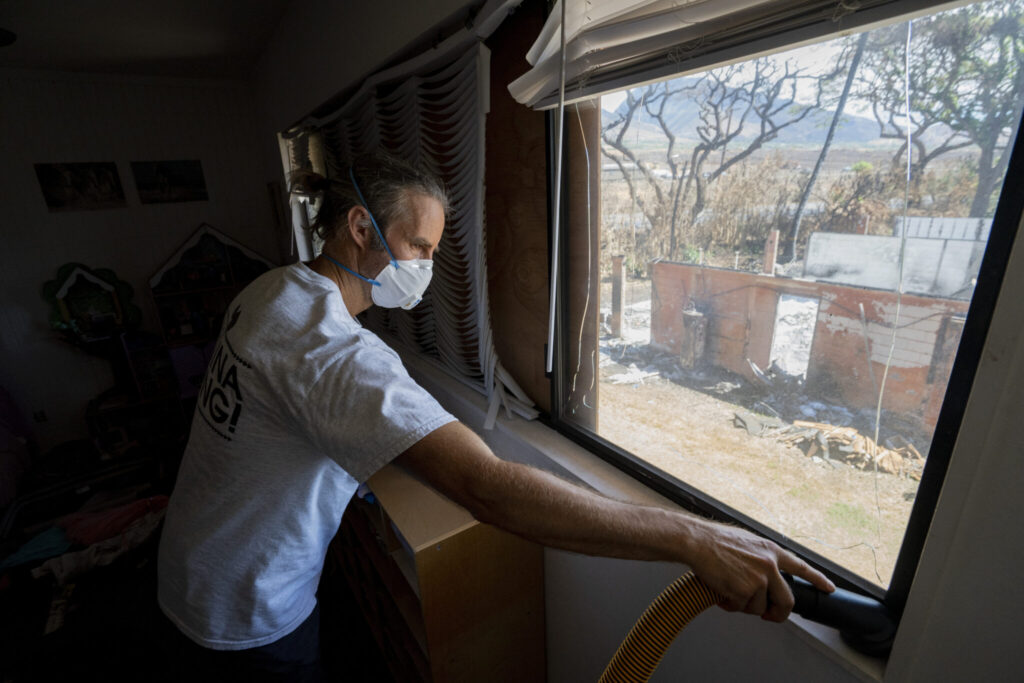When Daniel Skousen scrubs at the ash and soot covering his Maui home, he worries about the smell. What chemicals created the burning-trash-barrel scent that has lingered since a deadly wildfire tore through Lahaina in August? Should he believe government agencies’ assessment of when the air, land and water will be safe enough for his family to return?
Quick Read
- Health and Safety Concerns: Residents like Daniel Skousen are worried about the health risks posed by the ash and soot from the Lahaina wildfire, particularly regarding the lingering burning-trash-barrel scent. There are concerns about unknown long-term health effects and the chemical composition of the smell.
- Government Testing and Trust Issues: Skousen and others are skeptical about government environmental assessments, fearing potential bias due to economic pressures to restore Maui’s tourism industry. There are doubts about the thoroughness and impartiality of the testing.
- Desire for Independent Assessment: Residents seek independent evaluations from experts with community ties. However, accessing raw data for such assessments is challenging.
- Impact of the Wildfire: The August wildfire claimed at least 100 lives, displaced thousands, and left significant environmental damage, including toxic substances from various burned materials.
- Complications in Cleaning and Assessing Safety: Cleaning and determining safety levels in homes affected by wildfire smoke and debris is complex. High winds can re-contaminate homes with fine particulate matter, posing ongoing health risks.
- Limited Government Testing and Response: State and federal agencies have provided updates on Lahaina’s safety but have focused primarily on immediate risks. The Environmental Protection Agency (EPA) and the Hawaii Department of Health have not been forthcoming with detailed information on residential contaminant testing.
- Lack of National Standards for Post-Fire Cleanup: There are no specific national guidelines on acceptable cleanliness levels for residences impacted by nearby fires.
- Concerns Over Dioxins and Other Toxic Compounds: The health risks from dioxins and other toxic compounds released in fires are significant, with long-term effects including cancer and damage to the immune system.
- Challenges in Air Quality Monitoring: While air monitors are effective, they may not capture all harmful compounds, especially those that off-gas after being absorbed into surfaces.
- Difficulties in Home Remediation: Making a fire-damaged home safe again depends on various factors, including the residents’ risk tolerance and specific health conditions.
- Community’s Efforts to Recover and Rebuild: Residents like Skousen are actively involved in cleaning and rebuilding efforts, with some choosing to homeschool their children to avoid potential health risks.
he Associated Press has the story:
Maui residents wonder if their burned town can be made safe. No one knows
Newslooks- (AP)
When Daniel Skousen scrubs at the ash and soot covering his Maui home, he worries about the smell. What chemicals created the burning-trash-barrel scent that has lingered since a deadly wildfire tore through Lahaina in August? Should he believe government agencies’ assessment of when the air, land and water will be safe enough for his family to return?
Or will political and economic pressures to rebuild and restore Maui’s robust tourism industry — where visitors normally spend $14 million per day — lead officials to look at any testing results through rose-colored glasses?
“It appears very important to them to get that tourism tax revenue back,” said Skousen. “It makes you wonder if the testing will be biased.”
The fire blew out Skousen’s windows and filled his home with ash, but the building is still standing, and he hopes someday to move back in. The home next door burned to the ground.
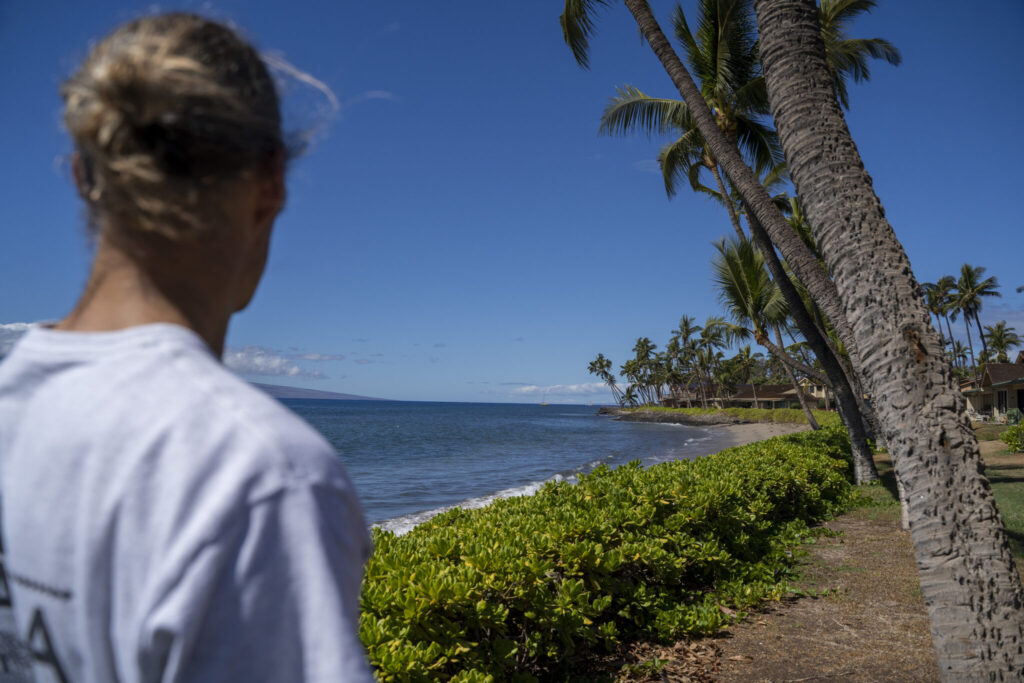
Skousen wants a second opinion on any government environmental assessments, preferably from an expert with a stake in the community. But the raw data isn’t easy to find, and experts say the long-term health effects from fires like the one that incinerated Lahaina are mostly unknown. There are no national standards that detail how clean is clean enough for a residential home damaged by a nearby fire.
At least 100 people died in the Aug. 8 wildfire, and thousands were displaced. Nearly 7,000 were still in short-term lodging two months later.
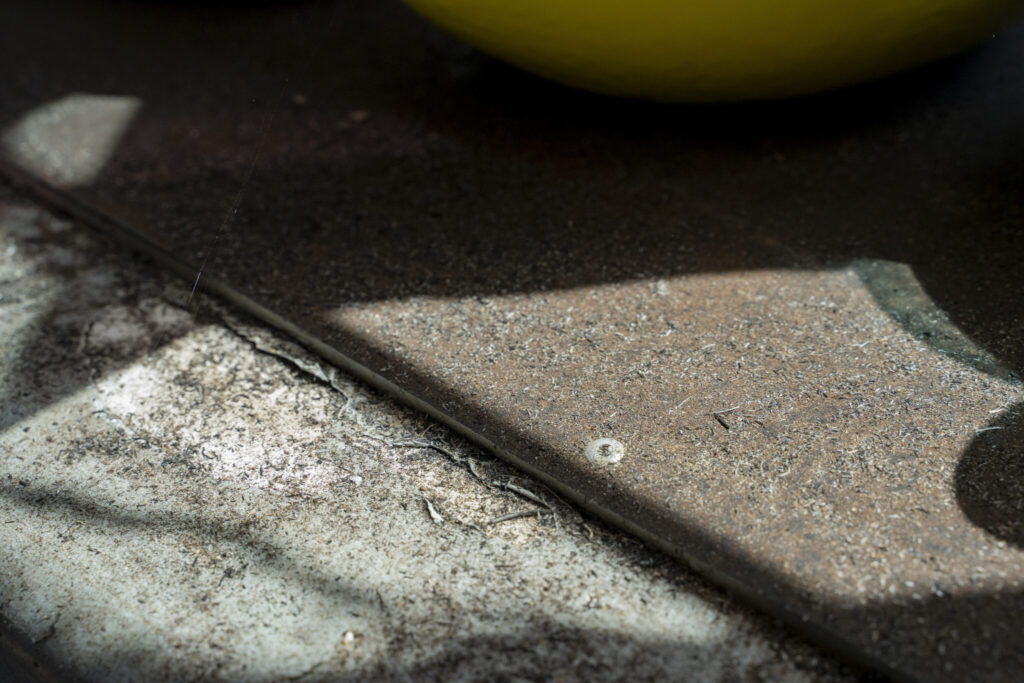
The rubble left behind includes electrical cables, plastic pipes and vehicle tires that emit dangerous dioxins when burned; lead from melted vehicles or old house paint; and arsenic-laden ash from termite-resistant building materials.
After a major wildfire burned 1,000 homes in Boulder County, Colorado, in 2021, health officials learned that even professionally remediated homes were often still polluted with ash, char and other toxic substances long after the fire, said Bill Hayes, the county’s air quality program coordinator.
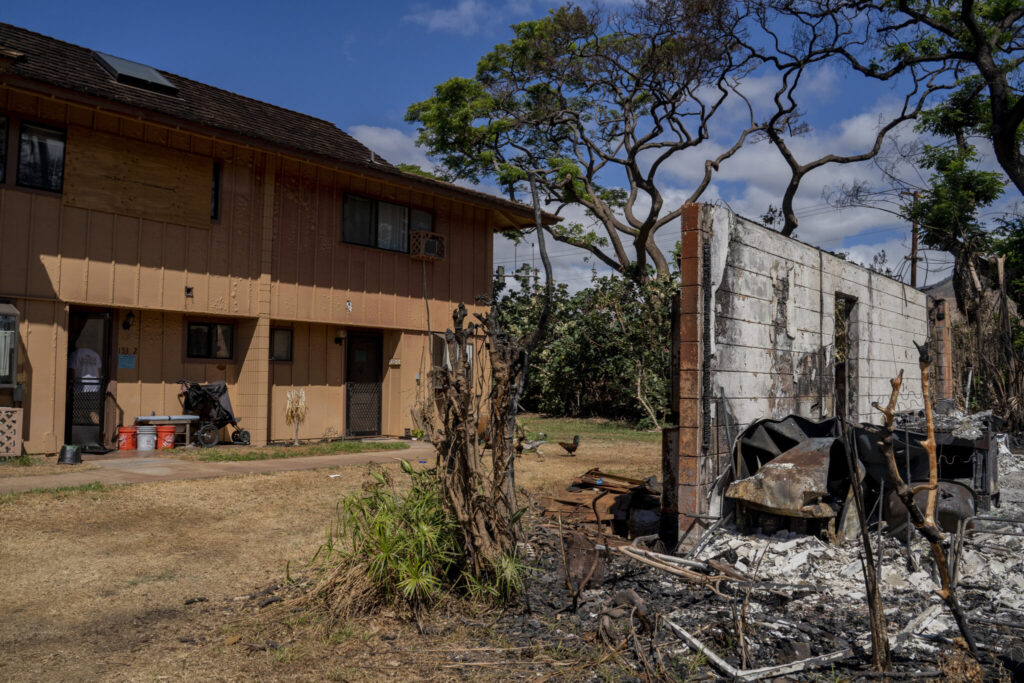
The reason? High winds — like those that plagued Maui during the wildfire this summer — forced fine particulate matter into every crevice, Hayes said. Those particulates would sit inside window panes, behind light switches, between shingles and elsewhere until the winds started up again, re-contaminating the home.
“Char is a carcinogen, so we don’t ever say any level of those particulates are safe,” Hayes said. “That became a challenge in the cleanup – determining the level of when is it clean enough?”
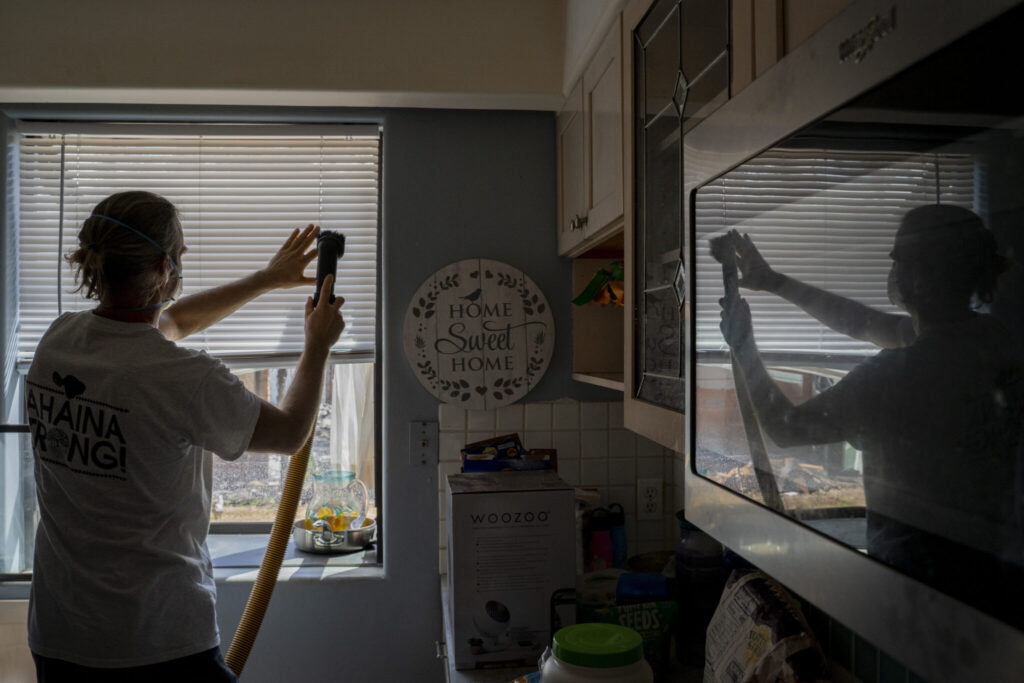
State and federal agencies have released regular updates on Lahaina’s relative safety. The water in much of the town is still unsafe to drink, and visitors have been advised to use protective gear in impacted areas. Officials say pregnant people and kids should stay out of the burn zone, though the Hawaii Department of Education says the schools, which are above the burned part of town, are safe.
Crews have installed air quality monitors throughout town and are spraying a soil sealant to prevent toxic ash from being washed into the ocean or blowing around.
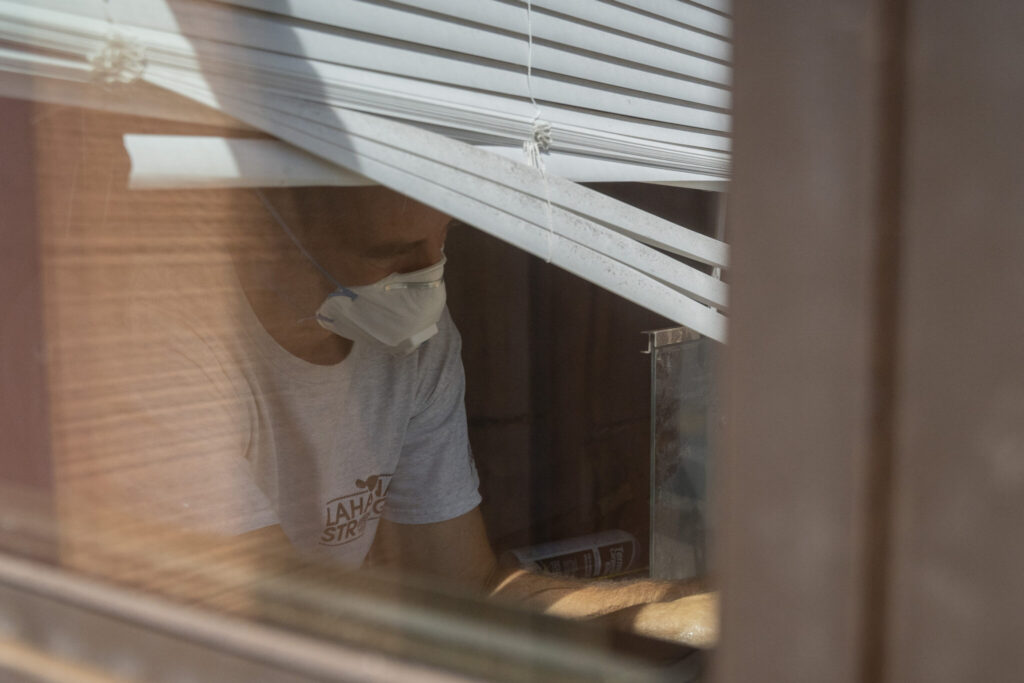
An attorney representing Skousen and about two dozen other Lahaina residents sent a public records request to the Environmental Protection Agency last month asking for all records regarding residential testing of contaminants in Lahaina and their impact to human health.
The EPA’s reply, sent earlier this month, wasn’t reassuring: “No records could be located that are responsive to your request.”
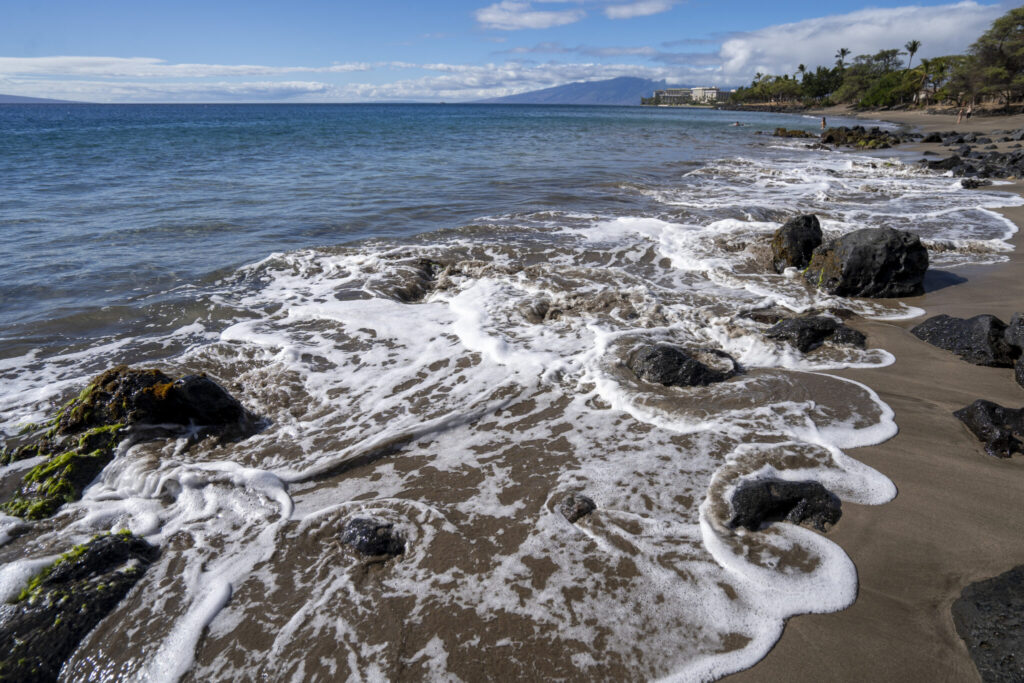
EPA spokesman Kellen Ashford told The Associated Press his agency did some environmental hazard testing in the burn zone, but only to determine the immediate risk for workers involved in the initial cleanup.
He referred further questions about such testing to the Hawaii Department of Health, which he said was responsible for determining longer-term safety for residents.
The Hawaii Department of Health’s Environmental Health Services Division also told Skousen’s attorney it had no records about residential testing of contaminants to release.
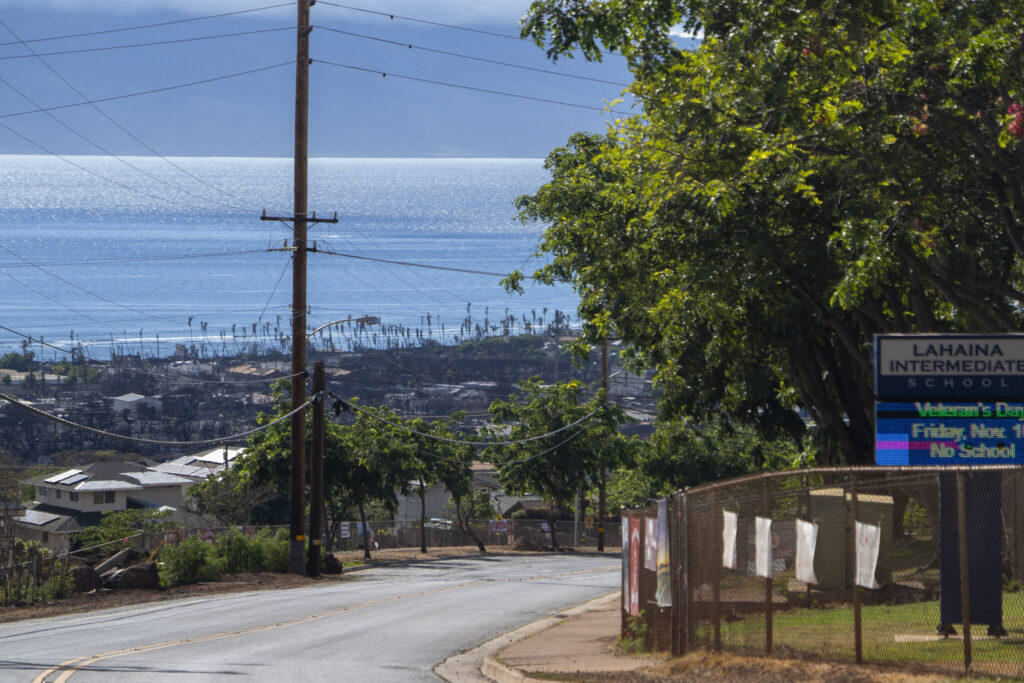
The Health Department declined interview requests. Spokesman Shawn Hamamoto said in an email the department will pursue additional air quality and ash testing when the U.S. Army Corps of Engineers begins removing debris from Lahaina.
“I think that they’re playing ‘hide the ball,’” said Skousen’s attorney, Edward Neiger. “The question is, why do they feel the need to hide anything?”
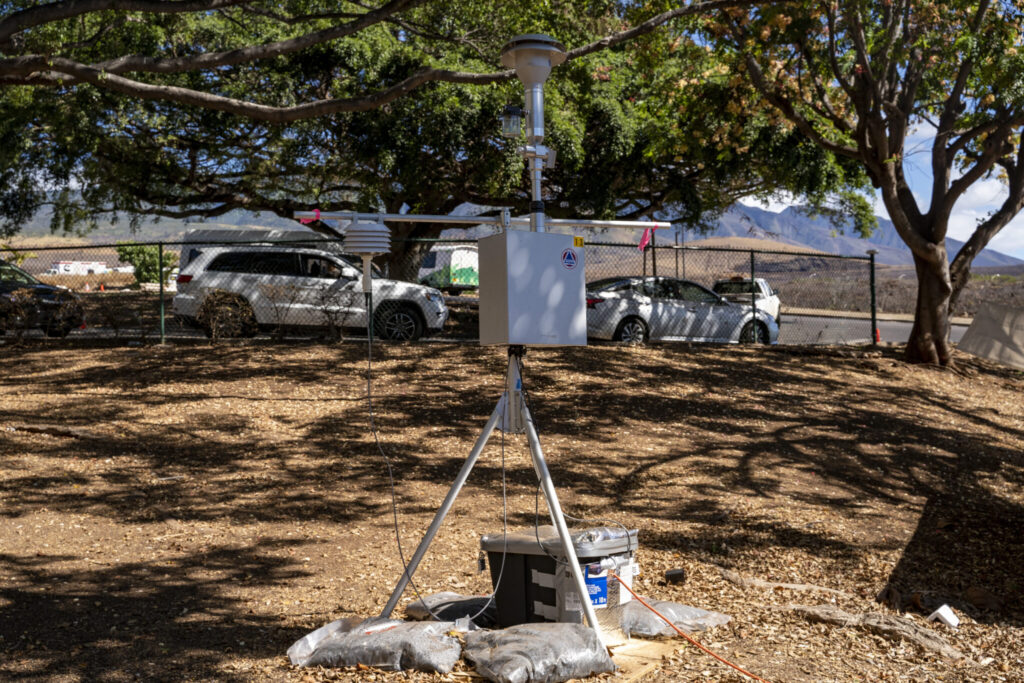
Ashford acknowledged some residents are skeptical of the cleanup efforts. He said the EPA has people stationed at the Lahaina Civic Center and at work sites to talk to community members about their concerns.
Andrew Shoemaker, a fine art photographer who operated a gallery on Lahaina’s famous Front Street, believes it’s an important part of healing to go back to the burned areas to see what is left, but he has recently had a lung infection and doesn’t want to risk his health.
“I don’t even want to take the chance of going over there,” he said.
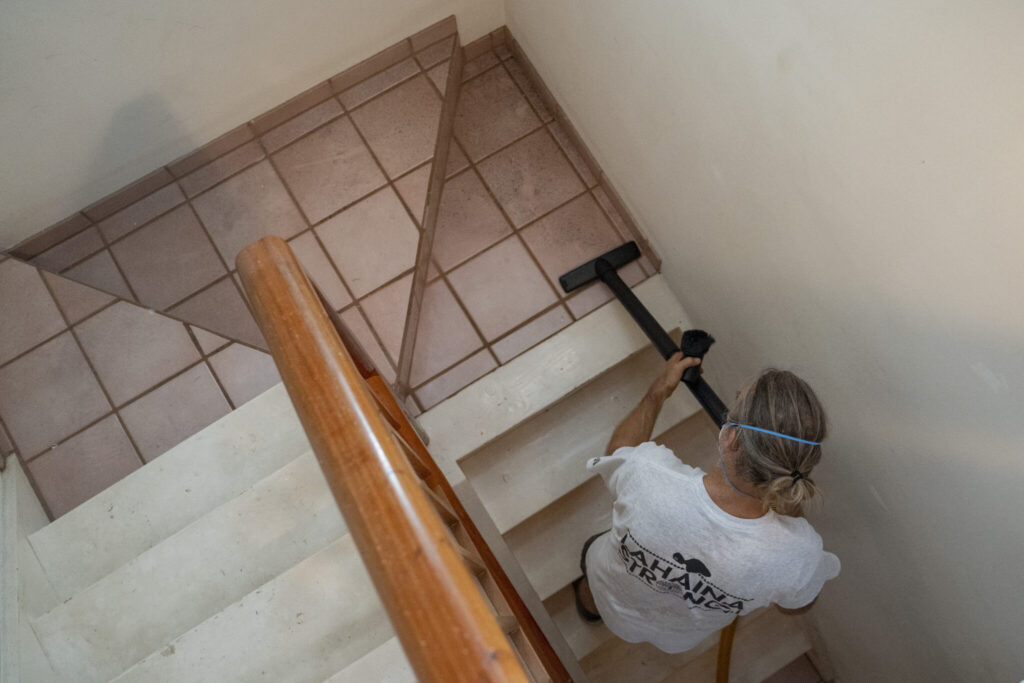
Dioxins, toxic compounds that can be released when plastic pipes, tires and other household materials are burned, are a particular concern for Shoemaker. Dioxins can last for decades inside the human body, and can cause reproductive and developmental problems, damage the immune system, interfere with hormones and cause cancer, according to the World Health Organization.
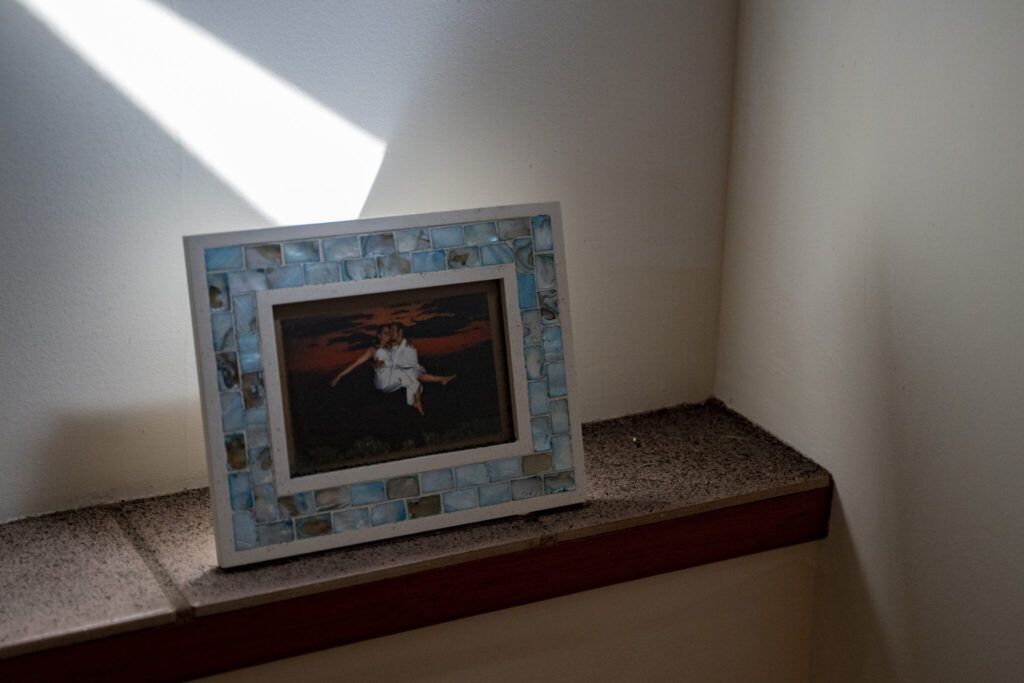
The EPA has found that forest fires and household trash burning in backyard burn barrels — how Skousen now describes the scent of Lahaina — are both major sources of dioxin emissions.
Irva Hertz-Picciotto, a professor and environmental epidemiologist with University of California-Davis, said the air monitors are effective and can measure particles that are about 30 times smaller than the width of a human hair.
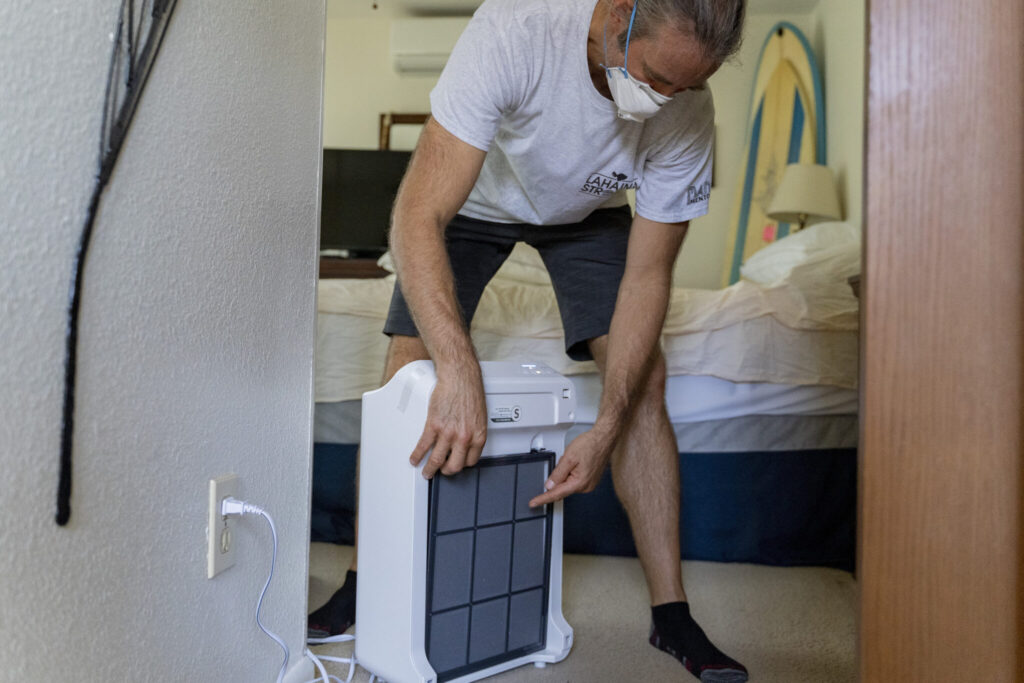
Still, there is a lot that scientists don’t yet know about the long-term health risks posed by fires, Hertz-Picciotto said.
That post-fire smell noticed by Skousen can be a result of off-gassing, she said, which occurs when volatile organic compounds are absorbed into surfaces and released later.
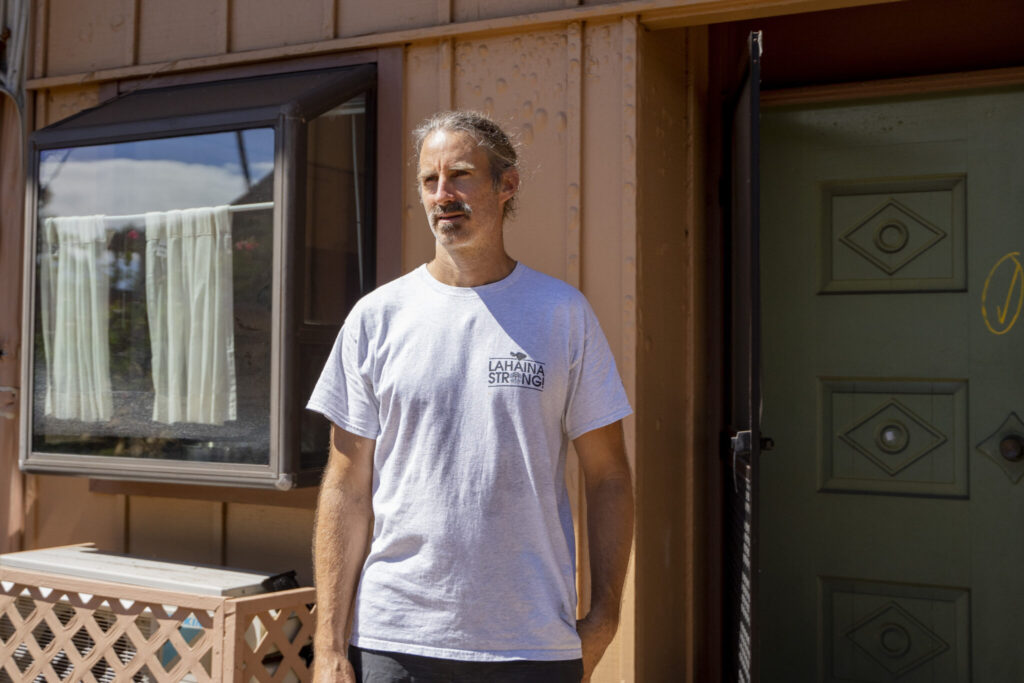
Even with careful air quality monitoring, off-gassing can expose residents and cleanup workers to toxic fire emissions for months, and research shows only some volatile organic compounds can be trapped by high-quality air particle filters, according to the Cooperative Institute for Research in Environmental Sciences at the University of Colorado Boulder.
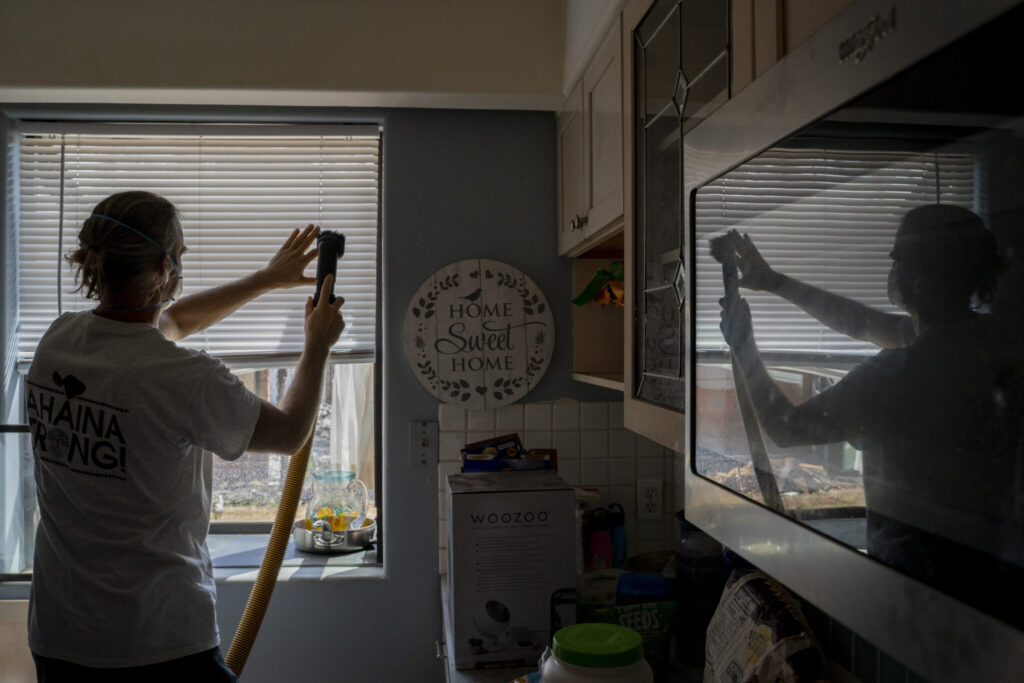
“If it smells like burned plastic or burned electrical cables, then probably those chemicals are in the air and not healthy,” Hertz-Picciotto said. “The other side of that, though, is even if you can’t smell it, that doesn’t mean it’s safe.”
Skousen is a teacher and runs a cleaning business on the side. He’s spent his off hours in Lahaina working on cleaning his and his neighbors’ homes. Skousen and his wife decided to homeschool their kids at their temporary residence outside of Lahaina for now rather than risk exposing them to possible health problems.
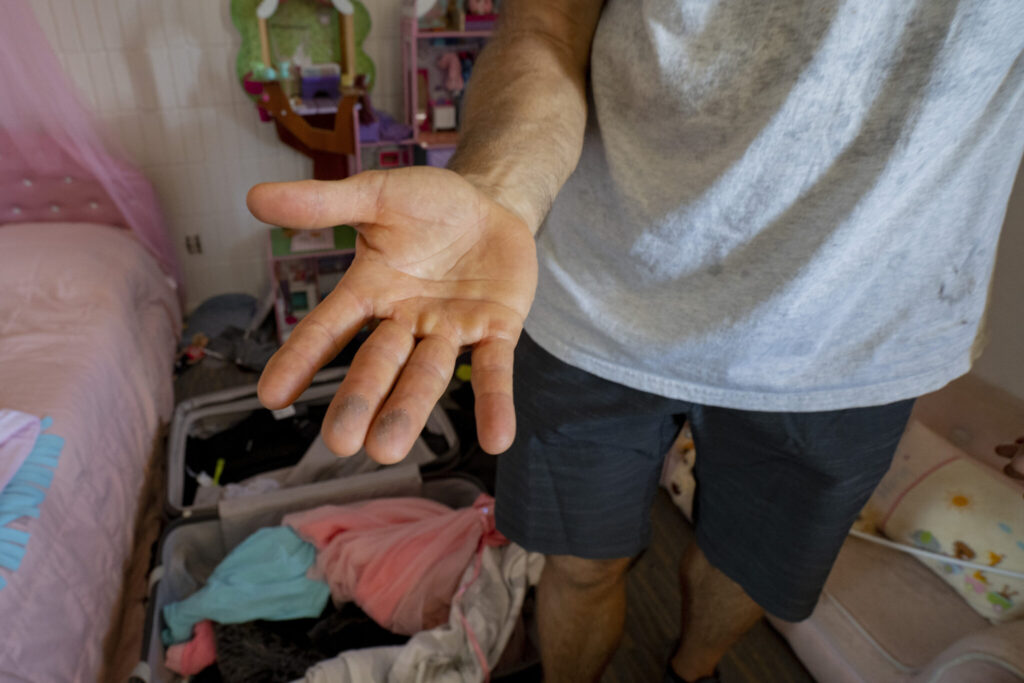
Most of the guidelines for human exposure to pollutants are based on industrial settings, where people might work 40 hours a week — not their homes, where they might spend 90% of their time, said Hayes, the Boulder County air quality coordinator. Whether a home can be made safe enough for residency comes down in part to the resident’s risk tolerance, Hayes said.
“There is no black-and-white, clear-cut answer,” he said. “If they have young children in the home, or anyone has respiratory conditions, they might want to do significantly more cleaning than what the guidance documents are recognizing.”

